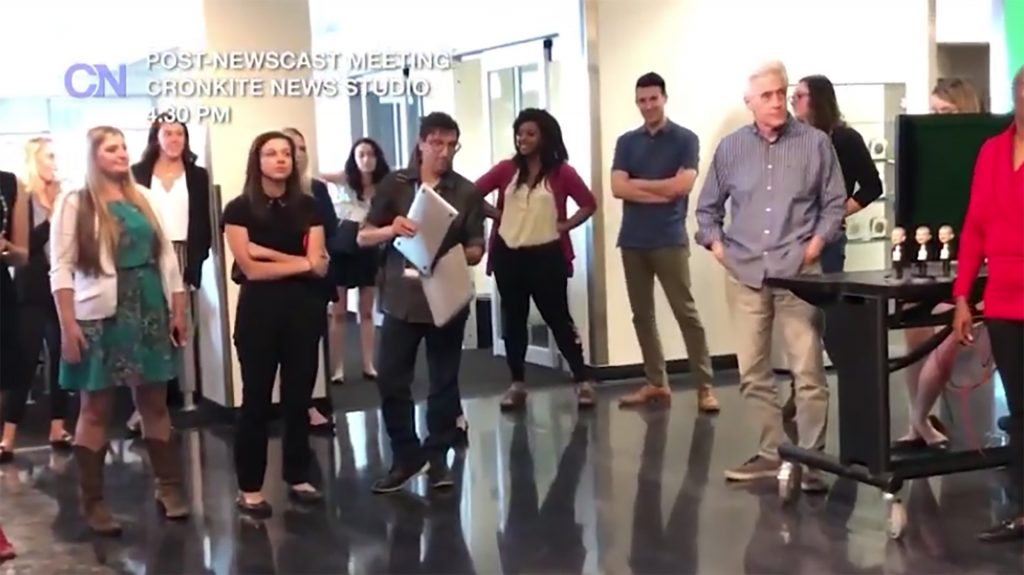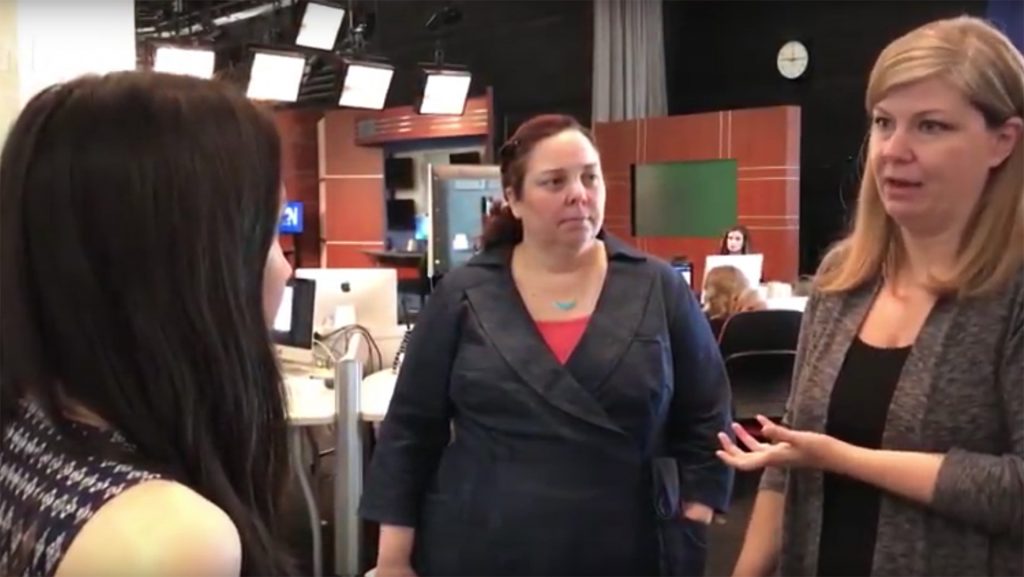
Only 21 percent of U.S. adults say they have “a lot of trust” in information from national news sources, according to 2018 data from Pew Research Center. Local news fares only marginally better, at 28 percent.
It’s not news that trust in news is low. The question is what to do about it. An innovative story format piloted by Cronkite News at Arizona State University suggests one path.
In February, “Cronkite News: Full Circle” was awarded top prize in the Disrupt the News competition sponsored by TVNewsCheck and the Broadcast Education Association. The approach is like a minidocumentary on the reporting process.
“Transparency and ‘pulling back the curtain’ is not just the ideal way to grow audience trust, it also makes cliché newscasts more interesting, and makes the audience part of the process,” wrote one of the contest judges. “Sort of like a show kitchen, where you watch the chef prepare your food. It’s postmodern.”
The idea grew from a simple question: Why not show viewers what journalists do all day?
The goal of “Full Circle” was to “pull back the curtain on how TV news reporting happens by documenting the behind-the-scenes process from story pitch to the post-newscast meeting,” said Melanie Alvarez, the project’s executive producer.

“Students were very motivated by having people understand what it is we do,” Alvarez said.
In the current environment of mistrust, she added, when students would divulge they were in journalism, “people would say, ‘Why would you want to do that?’”
Show your work
Newsrooms perhaps can learn a lesson from math teachers who demand of students “Show your work.” If the audience is going to trust the product – the reported story – they deserve more visibility into the process of how that story was prepared.
“Cronkite News: Full Circle” pairs a reporter with a producer to document the reporting process. Viewers get to see the morning pitch meeting, the process of finding (and getting turned down for) interviews, decision-making in the edit booth and even the after-show postmortem.
“We wanted to show these conversations that happen in a newsroom to help journalists frame a story in a way that serves the public,” Alvarez said.
Such transparency can be scary for a newsroom, Alvarez said. “It puts you in a vulnerable position. I was scared with what the audience might think.”
By being more transparent about its reporting process, the news team opened itself up to even closer review. One lesson: Transparency also results in greater accountability.
Audience response to “Full Circle” was strong, with most viewers intrigued and in some cases even amazed by the process. The most common audience reaction, according to Alvarez, was: ‘Wow, I had no idea it took that much to get that 90 seconds on the air!’
It took the producing team a full extra day to prepare the “Full Circle” version of the story. But based on the positive audience response, Cronkite News plans continued experimentation with this transparent storytelling method. This spring, the Knight-Cronkite News Lab will partner with Smith-Geiger on audience and format testing to quantify how this approach affects trust in news.
We’ll continue to share learnings from this and other experiments in the Cronkite newsroom on the Knight-Cronkite News Lab website at www.cronkitenewslab.com.